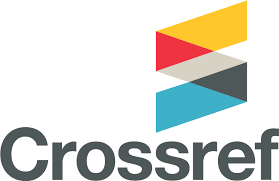Theoretical fundamentals and metrics of country competitiveness in the fourth industrial revolution
DOI:
https://doi.org/10.5937/bizinfo2102049SKeywords:
country competitiveness, innovation capacity of the economy, Global Competitiveness Index 4.0, Serbia, productivityAbstract
On the one hand, the paper attempts to determine the complex phenomenon of competitiveness of countries conceptually and essentially, and on the other hand, it presents the competitiveness of the ten most competitive countries in the world, Serbia and 8 selected countries, according to Global Competitiveness Index 4.0. A wide range of views of economic theorists, concerning the justification of using the concept of country competitiveness, was stated. The position on the justification of treating the competitiveness of countries was stated and it was concluded that the basis of this concept is the increase in productivity as the most important determinant of long-term economic growth, i.e. the improvement of all significant factors that enable more efficient use of factors of production. The concept is based on the observation of economic growth as the sum of growth factors of production - i.e. labor and capital - and total factor productivity, as measures of factors that cannot be explained by labor, capital or other inputs. Also, the paper provides an analysis of the indicators of competitiveness and innovation ability of the ten most competitive countries in the world, the Republic of Serbia and selected countries from its surroundings in 2019, based on data from the World Economic Forum. It was stated that Serbia and the countries from its surroundings lag far behind the most competitive and most innovative countries in the world. However, a relatively favorable position of Serbia in terms of innovation capacity was noted, which leaves room for Serbia to make significant and faster progress in terms of improving international competitiveness than most of the observed countries in the region.
Downloads
References
Aiginger, K. (2006). Competitiveness: from a dangerous obsession to a welfare creating ability with positive externalities. Journal of industry, competition and trade, 6(2), 161-177. https://doi.org/10.1007/s10842-006-9475-6
Barton, J., Jenkins, R., Bartzokas, A., Hesselberg, J., & Knutsen, H. (2007). Environmental regulation and industrial competitiveness in pollution-intensive industries. Industrial innovation and environmental regulation: developing workable solutions. United Nations University Press, Maastricht, 51-80.
Bienkowski, W. (2008). How much are studies of competitiveness worth? Some reflections on the issue. In Competitiveness of New Europe (pp. 184-198). Routledge.
Crespo Rodríguez, A., Pérez-Quirós, G., & Segura Cayuela, R. (2012). Competitiveness indicators: The importance of an efficient allocation of resources. Economic Bulletin, (JAN).
Delgado, M., Porter, M. E., & Stern, S. (2014). Clusters, convergence, and economic performance. Research policy, 43(10), 1785-1799. https://doi.org/10.1016/j.respol.2014.05.007
Dragičević, M. (2012). Konkurentnost: projekt za Hrvatsku. Školska knjiga.
Garelli, S. (2004). Competitiveness of Nations: The Fundamentals. In: IMD World Competitiveness Yearbook, Lausanne, Switzerland.
Hudec, O. & Prochadzkova, M. (2015). Visegrad Countries and Regions: Innovation Performance and Efficiency. Quality Innovation Prosperity, 19(2), 55-64. https://doi.org/10.12776/qip.v19i2.593
Huggins, R., Johnston, A., & Steffenson, R. (2008). Universities, knowledge networks and regional policy. Cambridge Journal of Regions, Economy and Society, 1(2), 321-340. https://doi.org/10.1093/cjres/rsn013
Ketels, C. (2006). Michael Porter’s competitiveness framework—recent learnings and new research priorities. Journal of Industry, Competition and Trade, 6(2), 115-136. https://doi.org/10.1007/s10842-006-9474-7
Kitson, M., Martin, R., & Tyler, P. (2004). Regional competitiveness: an elusive yet key concept?. Regional Studies, 38(9), 991-999. https://doi.org/10.1080/0034340042000320816
Kitson, M., Martin, R., & Tyler, P. (2008). The Regional Competitiveness Debate, Programme on regional innovation. The Cambrigde MIT Institute.
Kitson, M., Martin, R., & Tyler, P. (2011). The geographies of austerity. Cambridge Journal of Regions, Economy and Society, 4(3), 289-302. https://doi.org/10.1093/cjres/rsr030
Krugman, P. (1994). Competitiveness: a dangerous obsession. Foreign Affаirs, 73(2), 28-44.
OECD. (1992). Programme on Technology and the Economy. OECD publishing.
Odehnal, J., Sedlak, M., & Michalek, J. (2012). A Competitiveness Evaluation of the Ukrainian Regions - Empirical Study. Inyinerine ekonomika — Engineering Economics, 23(4), 406-413. https://doi.org/10.5755/j01.ee.23.4.1296
Önsel, Ş., Ülengin, F., Ulusoy, G., Aktaş, E., Kabak, Ö., & Topcu, Y. I. (2008). A new perspective on the competitiveness of nations. Socio-Economic Planning Sciences, 42(4), 221-246. https://doi.org/10.1016/j.seps.2007.11.001
Porter, M. (1990). The competitive advantage of nations. The MacMillam Press Ltd.
Porter, M. (2000). Location, competition, and economic development: Local clusters in a global economy. Economic development quarterly, 14(1), 15-34. https://doi.org/10.1177%2F089124240001400105
Samuelson, P., & Nordhaus, (2011). Ekonomija. Mate.
Snieška, V., & Bruneckienė, J. (2009). Measurement of Lithuanian regions by regional competitiveness index. Inžinerinė ekonomika, (1), 45-57.
Rozmahel, P., Issever Grochova, L., & Litzman, M. (2014). Evaluation of Competitiveness in the European Union: Alternative Perspectives. ¬17th International Conference Enterprise and Competitive Environment 2014,
-581. https://doi.org/10.1016/S2212-5671(14)00381-5
Schwab, K. (2019). The Global Competitiveness Report 2019. World Economic Forum.
Sener, S., & Saridogan, E. (2011). The Effects of Science-Technology-Innovation on Competitiveness and Economic Growth. Procedia - Social and Behavioral Sciences, 24, 815-828. https://doi.org/10.1016/j.sbspro.2011.09.127
Trabold, H. (1995). Die internationale Wettbewerbsfähigkeit einer Volkswirtschaft. Vierteljahrshefte zur Wirtschaftsforschung, 64(2), 169-185.
Ulengin, F., Ulengin, B., & Önsel, S. (2002). A power-based measurement approach to specify macroeconomic competitiveness of countries. Socio-Economic Planning Sciences, 36(3), 203-226. https://doi.org/10.1016/S0038-0121(01)00021-0
Downloads
Published
Issue
Section
License
Copyright (c) 2021 BizInfo (Blace) Journal of Economics, Management and Informatics

This work is licensed under a Creative Commons Attribution-NonCommercial 4.0 International License.
















